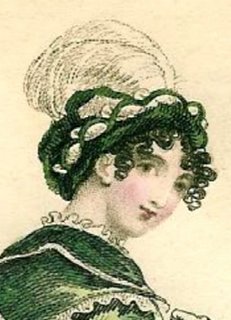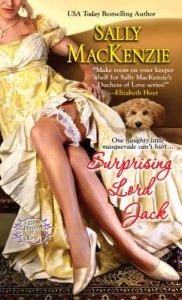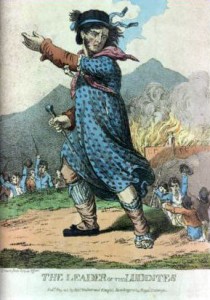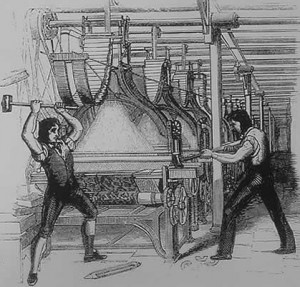I may have mentioned recently finishing Warner book #3, untitled and awaiting a publication date. This is Blake’s story, one of the hero’s friends in The Marriage Bargain. Right when I was tearing out my hair and gnashing my teeth to finish Blake’s story, my copy edits came for Innocence & Impropriety, the story of Rose from A Reputable Rake. I finished those in a record (for me) two days, then had to jump in to the next Mills & Boon, following a character from Innocence & Impropriety. That done, I decided I ought to plot the next Warner book, too, because I’m going to NYC to see my editor this coming Friday (and to see Phantom of the Opera on Broadway and Beowulf & Grendel in the movie theatre). The next Warner book is Wolfe’s story.
I like to start my books off with something really exciting, a task that gets harder and harder to do, but sometimes turns out to spark ideas for the rest of the plot. I may also have mentioned that story ideas do not exactly flood my brain and keep me awake at night.
For my big bang openings for Harlequin/Mills & Boon I’ve done lovemaking in a gaming hell (hee hee, pardon the pun), a Gretna Green wedding, and an attack in Hyde Park. This time I decided it would be nice to put my hero and heroine in a shipwreck. So I did my usual thing and bought as many books on shipwrecks that I could find and afford.
I bought Shipwrecks of the Revolutionary & Napoleonic Eras by Terence Grocott (1197 Stackpole Books), and Life Before the Mast by Jon E. Lewis, ed.(2001, Castle Books). I already owned A Sea of Words by Dean King (1997, Henry Holt and Co., Inc). And, of course, I tore through whatever I could find on the internet. The shipwreck scene was a lot of fun to write and I hope it comes off sounding real. I also hope my editor approves the story, because now I am dying to write it.
For Warner my big openings have included childbirth, a duel in which the hero is slain, and a tryst with a mysterious French thief (Blake’s story), but I need something very exotic for Wolfe.
I want to begin Wolfe’s story in India, where he will travel to learn about his Indian roots–he’s one quarter Indian and his father is (gasp) in Trade. I’d already collected some books to help: The East India Company by Antony Wild (1999, Harper Collins); Begums, Thugs & White Mughals, the Journals of Fanny Parkes (2002, Eland Publishing); White Mughals: Love & Betrayal in Eighteenth Century India by William Dalrymple (2002, Penquin Books). I found Original Letters from India by Eliza Fay, EM Forster, ed, (1986, Hogarth Press) when I was in Alabama for my High School reunion, and I just bought Raj: The Making and Unmaking of British India by Lawrence James (1997, St. Martins Press). But none of these books were giving me my huge opening.
Scouring the internet about India in the nineteenth century, I came across several first hand accounts of sati (or suttee, as it is sometimes spelled), the practice of a wife throwing herself on the funeral pyre of her deceased husband and burning alive.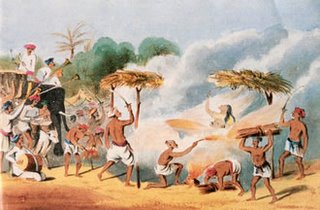 Now that will make a bang up opening! The heroine being forced into the flames when the hero rides to the rescue, snatching her from the consuming fire. I hope my editor loves the idea, because I really am itching to write that scene!
Now that will make a bang up opening! The heroine being forced into the flames when the hero rides to the rescue, snatching her from the consuming fire. I hope my editor loves the idea, because I really am itching to write that scene!
Now, I don’t want you to think I will actually read all of the books I mentioned above. I must keep up my reputation as the world’s worst read romance author. I do read bits of the books, though, unless one really captures my interest and I read every word. I read enough to tell me if my story idea will work and to give me enough knowledge of the topic to at least take a stab at writing it. Then as I write, I go back to the books and the internet and research whatever I need to at that moment. This may not be the most efficient way to do it, but it has worked for me so far.
I keep all my notes on the computer. I copy information from the internet. I might even summarize something from a book. I don’t make a collage for the story, but I do have a page I always call “Names” where I put down the facts and backstory for the main characters. I find a photo to use for my hero and heroine. Quite by accident, the photo I chose for the hero of this next Mills & Boon was one of Gerard Butler, chosen before I became one of the converted and actually knew who he was. For the heroine, I chose Jennifer Connelly, because she looks vulnerable but has strength underneath. For the Warner book, Wolfe is an actor named Adrian Green and the heroine is a beautiful Indian actress named Bridget Monynahan. But forget these images if you prefer to visualize on your own. The books will not be out until 2007 so you have lots of time to forget.
I don’t know when I’ll get the go ahead for the Mills & Boon but I expect to find out about the Warner book and Wolfe this Friday. If my editor doesn’t like it, at least I’ll still get to feast my eyes on another fictional character that night – Beowulf, played by Gerard Butler!
I’ll let you know how it goes next week.
Cheers,
Diane






